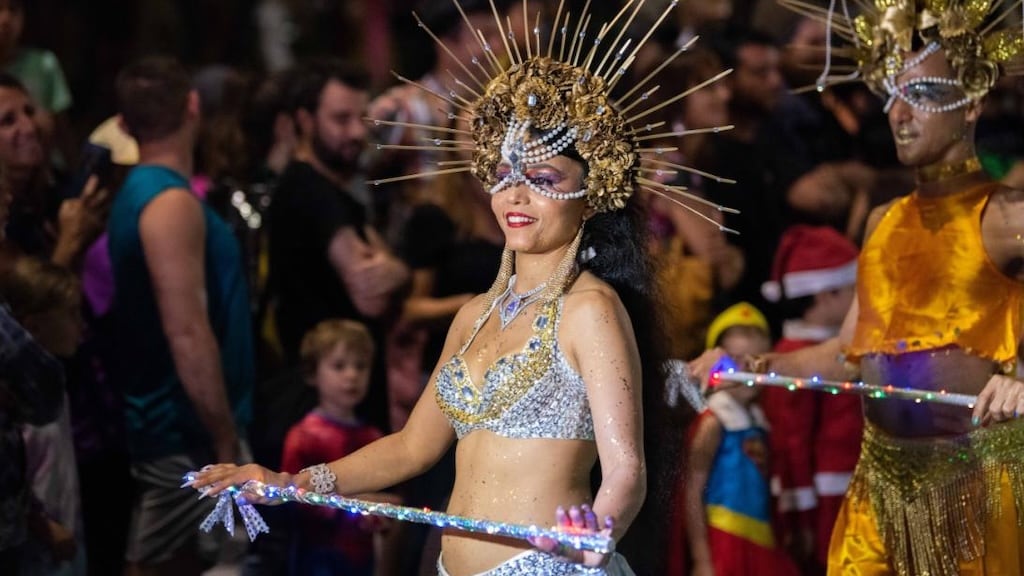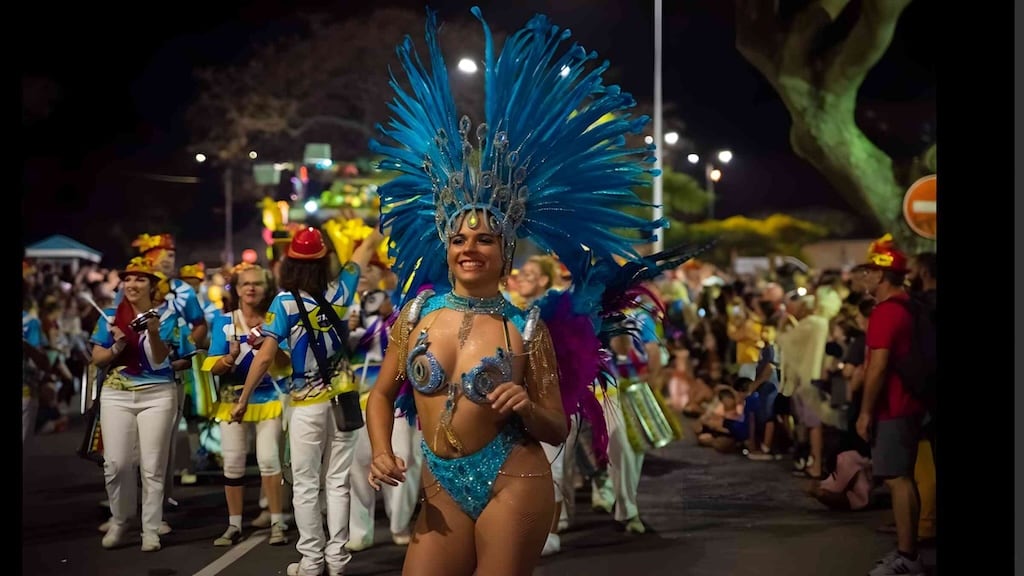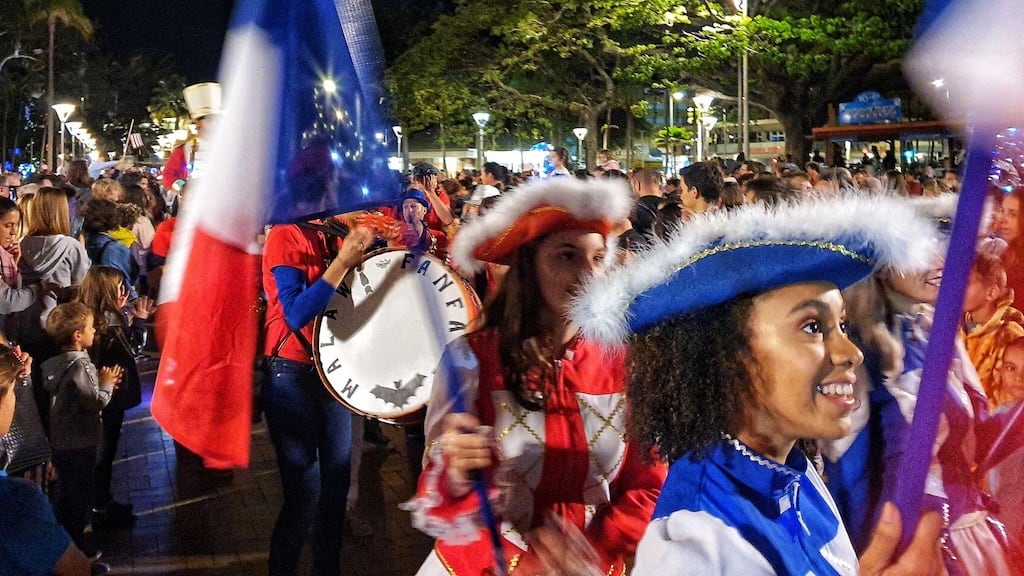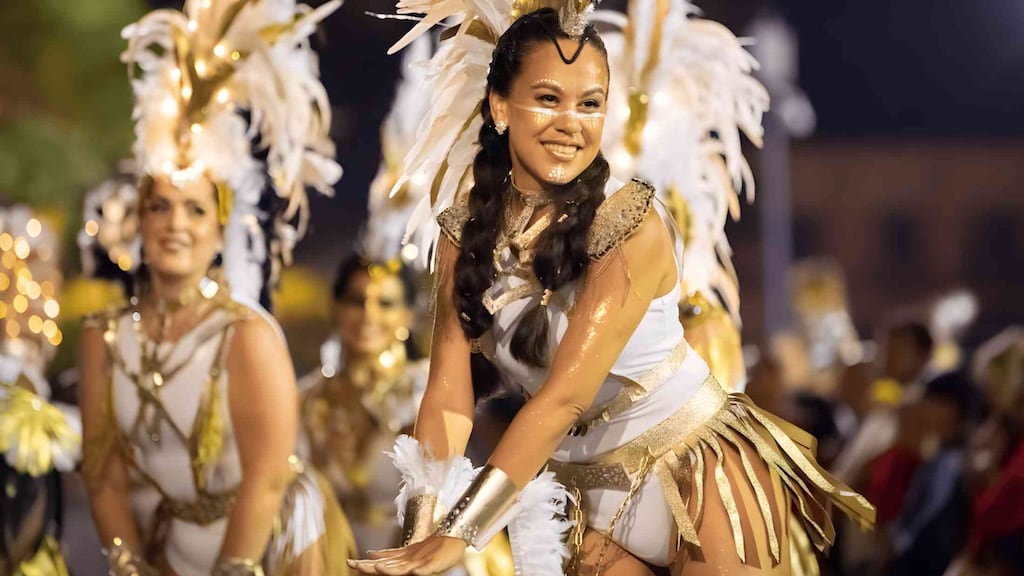Nouméa Carnival in New Caledonia: A South Pacific Night of Color
The Nouméa Carnival—sometimes misspelled “Nuncea Carnival”—is New Caledonia's most exuberant street celebration and a standout cultural event in Oceania. For one luminous evening, the capital's waterfront transforms into a river of glittering floats, pounding drums, and dance troupes that showcase the archipelago's Kanak roots alongside French-Pacific style.
Expect an inclusive, family-friendly atmosphere, food stalls perfuming the sea air, and a grand fireworks finale over the bay. For practical updates and background, consult the Ville de Nouméa and South Province tourism pages for the Carnaval de Nouméa.


Historical Background
What began as a community celebration has evolved into the capital's signature festival, drawing tens of thousands of onlookers. The parade traditionally weaves from Place Bir-Hakeim to Place des Cocotiers, two emblematic squares of Nouméa's city center.
In recent editions—while the city renovates certain downtown areas—the event has shifted to Baie de Sainte-Marie, proving how adaptive and resilient the celebration is. Over three decades, the carnival has become a stage for creativity: youth groups, neighborhood associations, and professional artists collaborate for months to design floats, choreograph routines, and stitch spectacular costumes.
Along the route, you'll hear rhythms inspired by Kanak percussive traditions, brass ensembles, and contemporary beats that speak to the territory's diversity. Milestones in recent years include more accessible viewing zones, expanded children's activities, and sustainability measures that encourage reusable cups and careful post-event clean-ups—further proof that the festival's evolution mirrors the city's civic pride.
These threads of continuity and change make the carnival a vivid lens on Traditional customs in New Caledonia, showing how ancestral motifs and modern influences happily intermingle.
Typical Activities
The Top activities during Nouméa Carnival radiate out from the evening parade. Arrive in the late afternoon to explore pop-up food villages featuring New Caledonian flavors: grilled seafood, venison sausages from the “brousse,” cassava fritters, and French-Pacific pastries.
Street performers circulate well before the first float rolls—stilt walkers, LED jugglers, and children's face-painting stations keep energy high. Once the procession begins, expect thematic floats—from coral-reef fantasies to canoe voyages—accompanied by dance troupes in feathered headdresses, shimmering lamé, and shell adornments. Drumming lines set an irresistible cadence, and many groups invite spectators to groove along at the edges.
Stages near the finish host short concerts while the last floats arrive, setting up the fireworks finale over the water. Between sets, browse local artisans selling shell jewelry, pandanus-weave accessories, and printed pareos, ideal souvenirs that support community makers. If the parade uses the Sainte-Marie shoreline route, vantage points near the parc urbain provide great sightlines with easy access to amenities.
Traditional Customs
Carnival is, by nature, playful—but in Nouméa it also nods to the territory's deep cultural fabric. Look for motifs tied to Kanak cosmology—turtles, birds, and yam vines—reimagined as float sculptures. Drumming styles often echo pilou-pilou rhythms, while chorus lines borrow moves from Wallisian and Futunan dances, reflecting the archipelago's Polynesian communities. Costume details matter: barkcloth patterns, woven pandanus skirts, and shell pectorals sit alongside sequins and feathers, symbolizing the fusion of heritage and contemporary carnival artistry. Food stalls may serve bougna-inspired flavors (bananas, taro, and coconut milk) alongside crêpes and choux—another delicious metaphor for New Caledonia's blend of cultures.
To learn more before you go, the Tjibaou Cultural Center introduces Kanak art and symbolism; plan a daytime visit and then see how those symbols are reinterpreted in parade aesthetics (see the center's profile via New Caledonia tourism). Observing respectfully—asking before photographing performers up close, and keeping paths clear for troupes—honors the spirit of the event and the communities that shape it.
What to Expect
Timing & route. The carnival typically takes place in late winter or early spring in the Southern Hemisphere (often September). Programmes are announced by the Ville de Nouméa a few weeks in advance, with the exact route (city center or Baie de Sainte-Marie) clearly indicated. Gates to activity zones usually open mid-afternoon; the parade steps off around dusk and concludes with fireworks by about 22:00.
Access & mobility. Temporary road closures are common; use municipal shuttles or taxis, or walk from Anse Vata and Baie des Citrons. Viewing areas near Place des Cocotiers (city-center route) or Parc Urbain de Sainte-Marie (bay route) generally offer level ground and accessible facilities. Families will find prams manageable on the wider boulevards.
Safety & etiquette. Bring a light jacket—sea breezes can be cool after dark—even though Nouméa's climate stays mild. Pack water, sunscreen for late-afternoon sun, and small cash for vendors. Keep to the curb during performances; if invited to dance, join with enthusiasm but return space to troupes promptly.
Where to stay. Hotels near Anse Vata and Baie des Citrons place you a short ride from both downtown and the bay; beachfront promenades offer dining and evening strolls after the show. Browse stays in the capital and book early—rooms near the route sell out once dates are confirmed.
Nearby highlights. Extend your visit with a lagoon day at Îlot Canard (Duck Island), markets at Port Moselle, or architecture and exhibitions at the Tjibaou Cultural Center. A coastal tramonto at Baie des Citrons pairs perfectly with a post-carnival seafood dinner.
Photography tips. The parade starts at dusk, so adjust for low light: use a fast lens or raise ISO; fireworks look best from a slightly elevated vantage near the finish zone. Ask before photographing children and costume details.
By planning around these practicalities, your experience of the Nouméa Carnival in New Caledonia will be smooth, immersive, and respectful of local communities.


Conclusion
Part street party, part cultural showcase, the Nouméa Carnival illuminates how a modern Pacific capital celebrates its many identities. It's a single evening, yet it condenses months of creativity into one generous, communal spectacle.
If you're ready to see Kanak motifs, ocean themes, and French-Pacific flair collide in the best way, set your sights on Nouméa—and keep an eye on the Ville de Nouméa announcements for the next parade night.